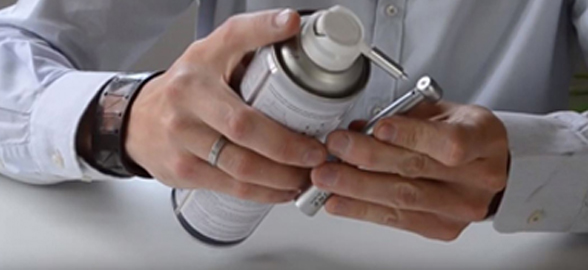Tooth colour cannot be considered a stable parameter but rather varies from one individual to another, from one dentition to another, from one tooth to another and even over time in a given period of time. same tooth. In addition, it must be taken into account that the perception of colour is the result of a combination of three factors: light, the object and the viewer.
As it is a job that the dentist must perform very frequently, at Dentaltix we thought it would be a good idea to give you some advice on finding the right shade and the correct level of translucency.
In addition, missing teeth can be fixed in many ways. There is a wide range of options to replace missing teeth. These prostheses can be fixed or removable and can be made of different materials.
One of the most common options is the placement of acrylic teeth. In this article we will tell you the best tips on how to choose the most suitable colour for your patient.
Composition of acrylic teeth
The acrylic teeth are composed of polymethyl methacrylate, pigments and ethylene glycol dimethacrylate. The pigments used will vary depending on the rest of the patient's teeth, so that they combine perfectly with them and their presence is not noticed.
There is also a wide variety of shapes and sizes of acrylic teeth, so that they best fit the patient's mouth.
To make acrylic teeth as realistic as possible, measurements are taken of the natural teeth and the gap they leave in the mouth. To choose the appropriate tone, the laboratories make color guides available to dentists that will make the choice easier and more accurate. In many cases they can be individualized by makeup, aging, wear, notches and others to give it greater realism.

Which scales are useful in taking dental shades?
- Hue: Corresponds to colour (blue, green, red...), that is, to the perception of the wavelength of light reflected from objects. On the Vita scale, the shade A (brownish yellow), B (yellow), C (grey), D (grayish pink) appears.
- Value: This aspect refers to brightness, luminosity, clarity, etc. It is measured on a scale of gray tones. On the Vita scale, the numbering 1, 2, 3, 4... refers to teeth from lightest to darkest.
- Croma: It is the degree of intensity, saturation or purity of the pigments. On the VITA scale it has the dimensions of Hue and Value, but it does not have a clear definition of the Chroma dimension.
In addition, today there are a wide variety of Apps available that will allow you to find the correct value for the color and translucency of the tooth and make a comparison on the spot.
How to choose the color and translucency level of the acrylic tooth? Top Tips:
Atmosphere is very important:
You should try that, when taking a sample of the tooth colour, the walls are a light colour, the patient's clothes are also light colours and that the patient does not have lipstick, as this can affect colour perception.
The composite system: use a simple one
There are very aesthetic composite systems. The previous guide to the scales can help you choose the color that best suits your dental case. At Dentaltix we recommend this IPS Empress Direct kit, which contains 32 colours and 5 levels of translucency. Therefore, the dentist can imitate any natural tooth.
Use the A-D or VITA shade system, which is very simple and logical and allows you to act intuitively.
Important factors when choosing colour:
- The selection of the shade must precede the actual dental preparation.
- It is also important that you moisten the surface of the tooth with which the shade is going to be compared.
- The canines are a good reference for you to select the colour, since it has a higher saturation.
- In addition, there is greater saturation in the cervical 1/3 than in the body and there is greater translucency at the incisal edge.
Prevent restorations from appearing too gray or light:
Because enamel is transparent, esthetics depend on the dentin core. If it is applied very thin, it can penetrate more of the light of the tooth, it will be more translucent and the restoration will appear grayer. Conversely, if a thicker layer is applied, it will make a very opaque seal and hide the dark light in the background. It is important that you apply a slightly thicker layer of enamel since it will lose volume during finishing and polishing.
Dental resins:
Currently, there is a group of opaque resins, which have a translucency between 6-8% and are ideal for reproducing areas of dentin or for use in the body of the restoration.
How to minimize errors in shade taking?
The laboratories believe that the guidelines used by the clinician and the laboratory should be agreed upon; as well as the type of prosthetic work to be performed; while dentists give weight to the help of another opinion and the taking of intraoral photographs as a means to minimize failures.
It is worth mentioning the advantage of using a system that guides shade taking, such as the 3D-Master guide, compared to the conventional guide based on empirical values for clinicians with less experience.
We hope you liked our post and remember to follow us on our socials to always be informed about the latest and most innovative trends in the dental sector. Until next time!





